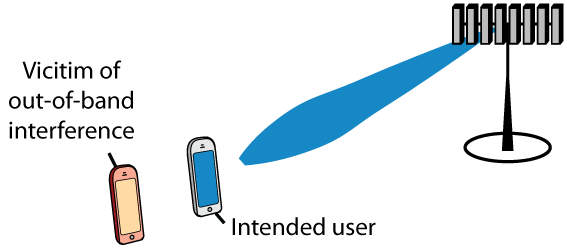The “Massive MIMO” name is currently being used for both sub-6 GHz and mmWave applications. This can be very confusing because the multi-antenna technology has rather different characteristics in these two applications.
The sub-6 GHz spectrum is particularly useful to provide network coverage, since the pathloss and channel coherence time are relatively favorable at such frequencies (recall that the coherence time is inversely proportional to the carrier frequency). Massive MIMO at sub-6 GHz spectrum can increase the efficiency of highly loaded cells, by upgrading the technology at existing base stations. In contrast, the huge available bandwidths in mmWave bands can be utilized for high-capacity services, but only over short distances due to the severe pathloss and high noise power (which is proportional to the bandwidth). Massive MIMO in mmWave bands can thus be used to improve the link budget.
Six key differences between sub-6 GHz and mmWave operation are provided below:
| Sub-6 GHz | mmWave | |
| Deployment scenario | Macro cells with support for high user mobility | Small cells with low user mobility |
| Number of simultaneous users per cell | Up to tens of users, due to the large coverage area | One or a few users, due to the small coverage area |
| Main benefit from having many antennas | Spatial multiplexing of tens of users, since the array gain and ability to separate users spatially lead to great spectral efficiency | Beamforming to a single user, which greatly improves the link budget and thereby extends coverage |
| Channel characteristics | Rich multipath propagation | Only a few propagation paths |
| Spectral efficiency and bandwidth | High spectral efficiency due to the spatial multiplexing, but small bandwidth | Low spectral efficiency due to few users, large pathloss, and large noise power, but large bandwidth |
| Transceiver hardware | Fully digital transceiver implementations are feasible and have been prototyped | Hybrid analog-digital transceiver implementations are needed, at least in the first products |
Since Massive MIMO was initially proposed by Tom Marzetta for sub-6 GHz applications, I personally recommend to use the “Massive MIMO” name only for that use case. One can instead say “mmWave Massive MIMO” or just “mmWave” when referring to multi-antenna technologies for mmWave bands.


